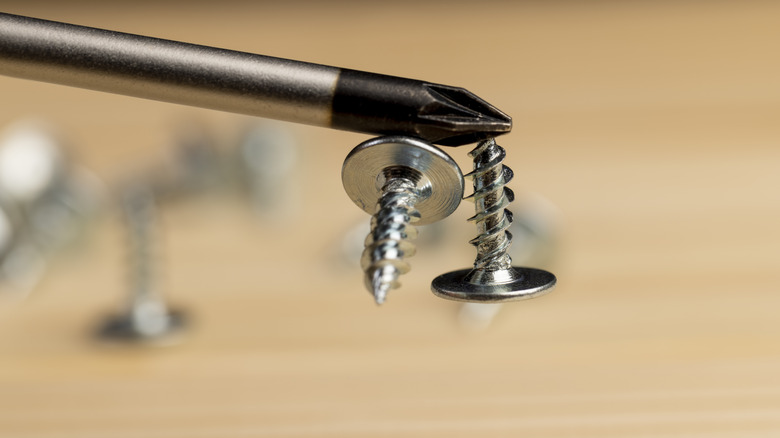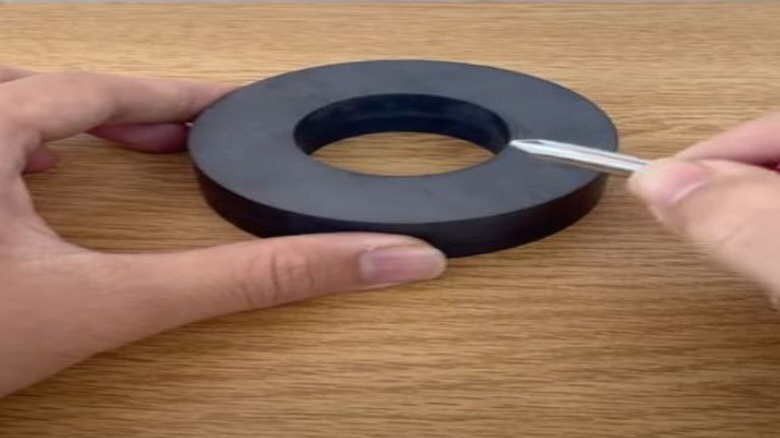How To DIY A Magnetic Screwdriver
Because of its use for both professional work and everyday tasks, screwdrivers are one of the tools every homeowner should have. Screwdrivers are used in diverse industries, including woodworking, electronics, automotive, and machinery. Because of the many types of screwheads, there are also many different types of screwdrivers specific to its head shape and notch. In addition, some screwdrivers have removable attachments for screws in confined or difficult-to-reach areas. One clever way to add functionality to a screwdriver is to magnetize it, which makes picking up and positioning screws much easier and is quite simple to do.
The first method to DIY a magnetic screwdriver tool is by using a magnet, but before doing the hack, it is best to remove any dust, grime, or rust on the screwdriver, as it may affect its magnetization. The magnet to be used can be found at home, from refrigerator magnets, magnetic cabinet latches, speakers, or handbag clasps. Once a magnet is available, hold the screwdriver handle and repeatedly rub the length of the screwdriver shaft on it, going in just one direction to avoid demagnetizing it. Next, check its magnetic strength, and if needed, rub it again on the magnet.
The science behind magnetization lies in imparting the screwdriver its magnetic field. This happens when the metal of the screwdriver is rubbed against the magnet, its north-pole seeking atoms become aligned in one direction, effectively turning it into another magnet. If a magnetic screwdriver isn't needed anymore, it can be easily demagnetized. This can be done either by using a hammer and hitting the shaft repeatedly or by using another piece of metal and rubbing the screwdriver shaft on it, both of which disrupt the atom's alignment, removing the magnetic field on the metal.
A practical DIY magnetic screwdriver hack
Another way to magnetize a screwdriver is by using a battery. For this process, a length of copper wire, a wire stripper or pair of pliers, and a 9V battery are needed. To begin, remove the insulation from both ends of the wire using the wire stripper. Next, wrap the wire around the screwdriver shaft, with as many coils as possible, to make the magnetization stronger. Finally, take both ends of the wire and connect the lower end to the negative terminal of the battery and the upper end to the positive terminal. Wait for a few seconds, remove the coil, and the screwdriver is now magnetized.
There are many advantages of magnetic screwdrivers, starting with how the magnetized tip holds the screw in position. This allows the user to pick up the screw one-handed and without additional tools, which saves time. Next, it limits potential errors by minimizing screw slips during insertion since it fits securely on the screwdriver. Furthermore, a magnetized screwdriver contributes to workplace safety by ensuring screws will not get lost or misplaced because they stick to the screwdriver. Lastly, a magnetized screwdriver reduces user fatigue by simplifying screw insertion and removal.
By magnetizing a screwdriver, it's easier to work in confined spaces or work with smaller screws. An alternative to a traditional screwdriver is the electric version, which is normally pricey. However, there is the cheapest electric screwdriver from Home Depot, a basic Ryobi model that's good for light tasks and DIY projects; and, because its screw bit attachments are metal, these can also be magnetized.

